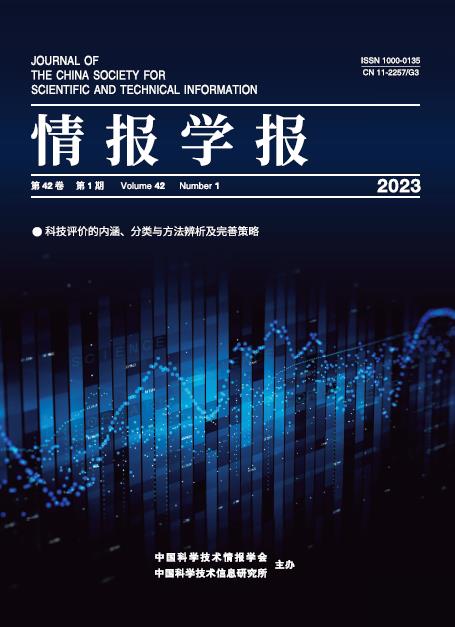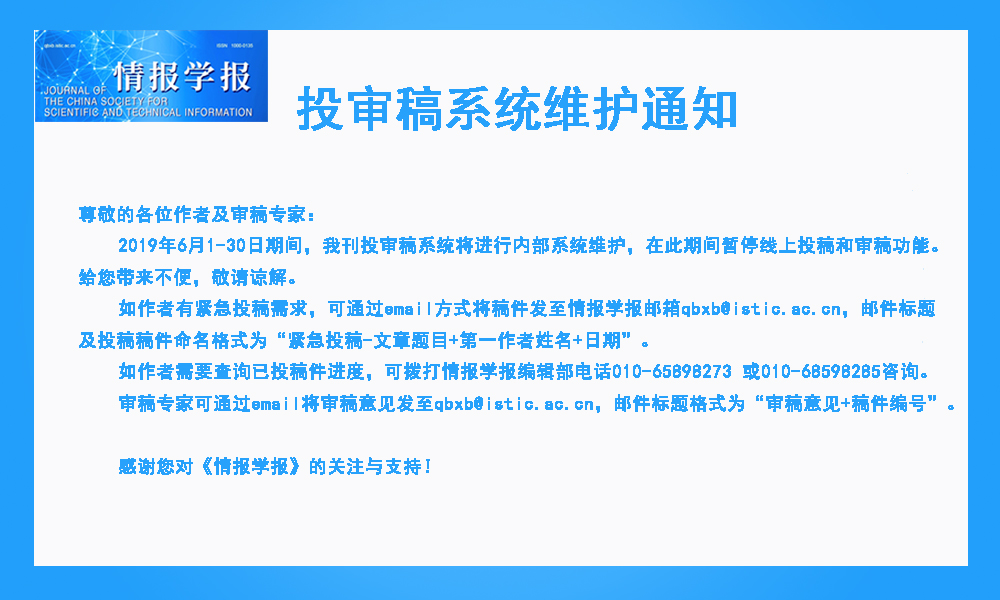 |
|
|
|
|
|
|
|
|
1 |
Concepts, Classification, Method Analysis, and Improvement Strategies of Science and Technology Evaluation Hot! |
|
 |
He Defang, Pan Yuntao |
|
|
DOI: 10.3772/j.issn.1000-0135.2023.01.001 |
|
|
To address the complexities, uncertainties, and non-consensus of science and technology evaluation, this study, starting from the origin and purpose of evaluation, clarifies the concepts, classification, and functions of science and technology evaluation and proposes the use of corresponding reasonable evaluation methods. The study aims to construct a scientific and effective evaluation system and mechanism and establish an evaluation-oriented evaluation system with academic contribution and innovation value at its core. To create a healthy and sustainable innovation ecology, the study presents improvement strategies for science and technology evaluation in terms of special evaluation scheme formulation, coordination of different classifications of evaluation, full-process evaluation, evaluation of true problems, innovative methods, quantitative evaluation, scientific evaluation tool development, academic evaluation of science and technology personnel, and open evaluation. |
|
|
2023 Vol. 42 (1): 1-9
[Abstract]
(
702
)
HTML
(83 KB)
PDF
(924 KB)
(
526
) |
|
|
| Intelligence Theories and Methods |
|
|
|
|
43 |
Effect of the Diversity of Scientific Teams on Disruptive Innovation in Academia: A Case Study in the Field of Artificial Intelligence Hot! |
|
 |
Tang Xuli, Li Xin |
|
|
DOI: 10.3772/j.issn.1000-0135.2023.01.005 |
|
|
Although disruptive innovation in academia has become a new engine for technological progress and economic development, few researchers have studied the factors that affect disruptive innovation in academia. In this study, we take scientific teams as the research object and systematically analyze the effect of diversity in scientific teams on disruptive innovations in academia from three perspectives: social category, information, and behavior willingness. First, we collected collaboration papers on artificial intelligence (AI) published between 1950 and 2019 from the Microsoft Academic Graph. We extracted and represented author characteristics using topic model and text mining to compute the diversity indicators of scientific teams. Additionally, we measured disruptive innovation at the article level using the disruptive index. Then, the correlation analysis and ordinary least squares (OLS) regression analysis were used to eliminate the diversity indicators unrelated to disruptive innovation in academia. Finally, coarsened exact matching was used to explore the causal relationships between the diversity of scientific teams and disruptive innovation in academia. The results show that in the field of AI, the topic diversity and nation diversity of scientific teams have a significant causal relationship with disruptive innovation in academia. The degree of disruptive innovation in academia will decline 8.776%-19.000% when the topic diversity of scientific teams increases; it will also decline 5.493%-7.693% when the nation diversity increases. In addition, the results also show that there is no causal relationship between the diversity of behavior willingness of a scientific team and the degree of disruptive innovation in academia in the field of AI. |
|
|
2023 Vol. 42 (1): 43-58
[Abstract]
(
462
)
HTML
(346 KB)
PDF
(1330 KB)
(
934
) |
|
|
| Intelligence Technology and Application |
|
|
|
|
74 |
Smap: Visualization of Scientific Knowledge Landscape Based on Document Semantics Hot! |
|
 |
Zhang Shuang, Liu Feifan, Luo Shuangling, Xia Haoxiang |
|
|
DOI: 10.3772/j.issn.1000-0135.2023.01.007 |
|
|
Given the explosive growth of academic literature, the continuous cross-fusion of knowledge, and the expansion and the increasing complexity of scientific research, widespread attention has been drawn to clearly visualizing the knowledge structure drown in massive amounts of literature as well as grasping development trends. Based on document representation learning and manifold learning algorithms, we suggest a method for constructing a semantic map (Smap). First, Doc2Vec is adopted to capture the high-dimensional semantic features between documents; then, UMAP (uniform manifold approximation and projection) is utilized to perform non-linear dimensionality reduction on the semantic proximity of documents. Finally, the kernel density estimation is employed to characterize the knowledge structure according to the heterogeneity of the document distribution. In the empirical experiments, we cover four scientific domains, ranging from thousands-level to millions-level of documents. Then, we construct an Smap, identify knowledge hierarchical structure, and analyze their dynamic evolution. Furthermore, using the classification system provided by Microsoft Academic Graph (MAG), citation relations, and keywords, we quantify the local purity of the document distribution on Smap and the correlation between the map distance and research distinction to verify the effectiveness of the proposed method. By comparing with controlled experiments, we further demonstrate the significance of the effectiveness of our method. This study expands the current methods of visualization systems in the scientific field and provides an alternative visualization method for scientific and technological information services. |
|
|
2023 Vol. 42 (1): 74-89
[Abstract]
(
360
)
HTML
(175 KB)
PDF
(8874 KB)
(
252
) |
|
|
| Intelligence Users and Behavior |
|
|
90 |
Research on the Learning Engagement of Information Search Users: Based on Kolb's Learning Style and Cognitive Flexibility Theory Hot! |
|
 |
Sun Xiaoning, Ji Fuchun, Liu Siqi |
|
|
DOI: 10.3772/j.issn.1000-0135.2023.01.008 |
|
|
The research scope of learning engagement, a popular topic in learning science, is increasingly growing. “Search as learning” generates a different understanding of interactive information retrieval as well as learning activities. Exploring the influencing factors of learning engagement can improve cognitive flexibility and knowledge transfer, develop the application and innovation ability of information search users, and provide a reference for optimizing the functional design of the information retrieval systems supporting learning objectives. In this study, the learning engagement of information search users was categorized according to three dimensions: behavioral engagement, cognitive engagement, and emotional engagement. The effects of learning style and cognitive flexibility on these three dimensions were explored via information retrieval experiment research. Data analysis and processing methods include search logs analysis, content analysis, self-reporting, analysis of variance (ANOVA), and the chi-square test. The results show that learning style has a significant impact on the learning cognitive engagement of information search users but no significant impact on their learning behavior engagement and learning affective engagement; cognitive flexibility affects the learning behavior engagement as well as learning emotional engagement of information search users but has no significant impact on learning cognitive engagement. Finally, learning style and cognitive flexibility only influence the three dimensions of the learning engagement of information search users, but display no interactive effects with them. |
|
|
2023 Vol. 42 (1): 90-102
[Abstract]
(
219
)
HTML
(180 KB)
PDF
(1220 KB)
(
424
) |
|
|
|
103 |
Influence of Users' Search Path Characteristics on Information Search Effectiveness: An fsQCA Approach Hot! |
|
 |
Zhao Yiming, Li Qian, Qiu Yumeng, Chen Yijin |
|
|
DOI: 10.3772/j.issn.1000-0135.2023.01.009 |
|
|
This study aims to explore how the characteristics of the search path affect search effectiveness. Through user experiment, two different search tasks were designed in the same task situation, and the four search path features—path length, depth, complexity, and novelty—were quantified and extracted. The influence of the combination of different path features on the search effectiveness was explored using fuzzy-set qualitative comparative analysis (fsQCA). Six search path feature configurations with high information search effect were found. Furthermore, three types of search path patterns with high information search effect were summarized—fast browsing, exploratory query, and conservative query types. This study is novel in that it revealed multiple concurrent causation among search path characteristics and search effectiveness from the configuration perspective. |
|
|
2023 Vol. 42 (1): 103-112
[Abstract]
(
297
)
HTML
(130 KB)
PDF
(773 KB)
(
1429
) |
|
|
| Intelligence Discipline Development and Construction |
|
|
113 |
Research on the Intelligence Work Model of Collaborative Technological Security and Technological Development Hot! |
|
 |
Liu Mingyue, Yang Jianlin |
|
|
DOI: 10.3772/j.issn.1000-0135.2023.01.010 |
|
|
In the new era, scientific and technological intelligence work should not only pay attention to its security issues in the process of such development, but also to its development issues in the process of scientific and technological security maintenance, collaboratively discussing these issues. Based on the division of labor between security and science and technology development intelligence work, an intelligence work model for coordinating between these is proposed. This model integrates development thinking into scientific and technological security assurance, injects security maintenance awareness into the process of scientific and technological development, and realizes the mutual coordination of scientific and technological security and development information under the collaborative workflow of resource, technology, and task-oriented coordination. As such, it can identify and provide intelligence support for scientific and technological development opportunities in a security context as well as a perception of security risks within the scientific and technological development context. This model will ultimately serve the scientific and technological strategic decision-making of “overall development and security” to promote scientific and technological intelligence work that truly serves the needs of the national science and technology strategy. |
|
|
2023 Vol. 42 (1): 113-126
[Abstract]
(
371
)
HTML
(126 KB)
PDF
(1759 KB)
(
403
) |
|
|
|


